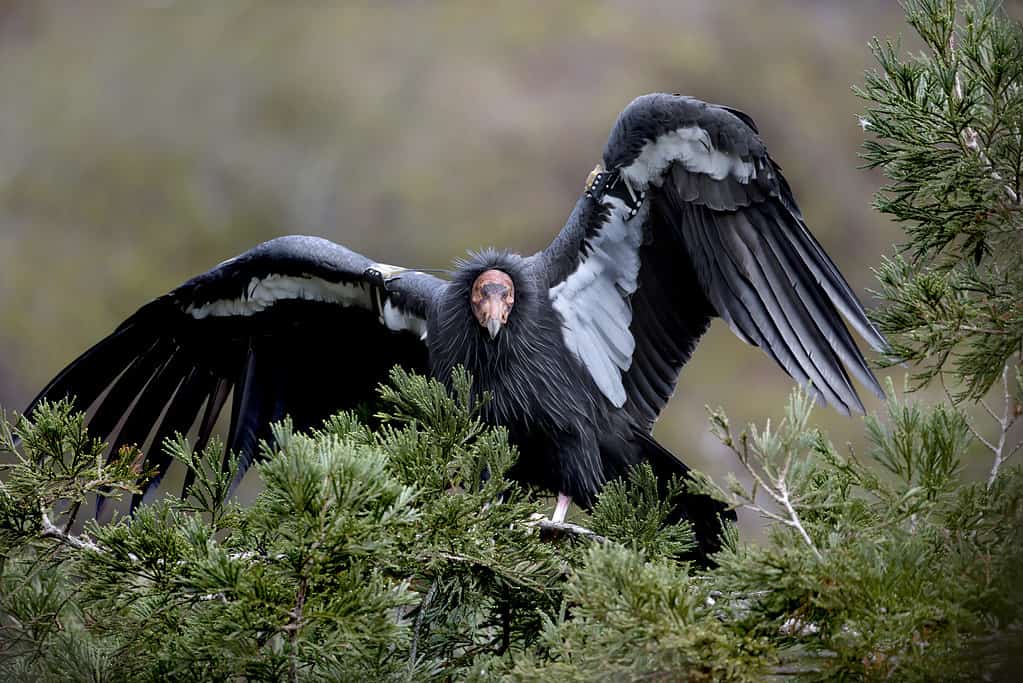Filmed at the Big Sur, California, this astonishing clip shows a huge condor taking flight from a high cliff without even flapping its wings! Thanks to a phenomenon called orographic uplift, the airflow is doing all the hard work, and all the condor has to do is hitch a ride. Orographic uplift is generated by slopes that deflect horizontal winds upwards. When a bird is close to the ridge, as this one is, it can take full advantage. Thermal uplifts can also help – as the air warms up, it expands and gets less dense. It becomes more buoyant and rises up the slope, giving a powerful uplift.
Watch the Take Off Now
Where Do Condors Normally Live?
As you would expect with a name like the California condor, this bird is found in California. In the past, they were found along the entire Pacific coast of North America. Fossil evidence suggests they were found as far east as New York and Florida in ancient times.
Now, they are endangered, and this spectacular largest bird in North America is limited to California, Utah, and Arizona, with a further 160 in captivity.
Where Can You Spot a California Condor?

California condors now only have a limited range.
©pjsells/iStock via Getty Images
These birds nest in remote locations, so finding their nesting sites high on cliff faces is not easy. However, they travel widely to hunt and feed. Look out for them in central California around the Big Sur coast (as featured in this clip) or around the Pinnacles National Monument. They can also be seen in southern California or around the Grand Canyon. Given their size, these guys are pretty distinctive – they can have a wingspan of over nine feet. You may confuse them for vultures, but condors do not teeter. They have also been confused for buteos, eagles, and even small planes! Most condors have a large tag on their wing for tracking. The condor in this clip had tag 1204 and was called Jade.
How Do Condors Normally behave?
Even though California condors travel long distances to find food, they always return to the same nesting and roosting sites. In fact, they spend more time roosting than flying! They also spend a lot of time preening their magnificent feathers, keeping them well-arranged. Sometimes, they use water to remove food and dust. Getting dirty feathers is an occupational hazard for carrion-eating birds, so feather hygiene is crucial for them. If decaying material gets stuck to their plumage, they risk getting a nasty infection!
The photo featured at the top of this post is © Barbara Ash/Shutterstock.com
Thank you for reading! Have some feedback for us? Contact the AZ Animals editorial team.







